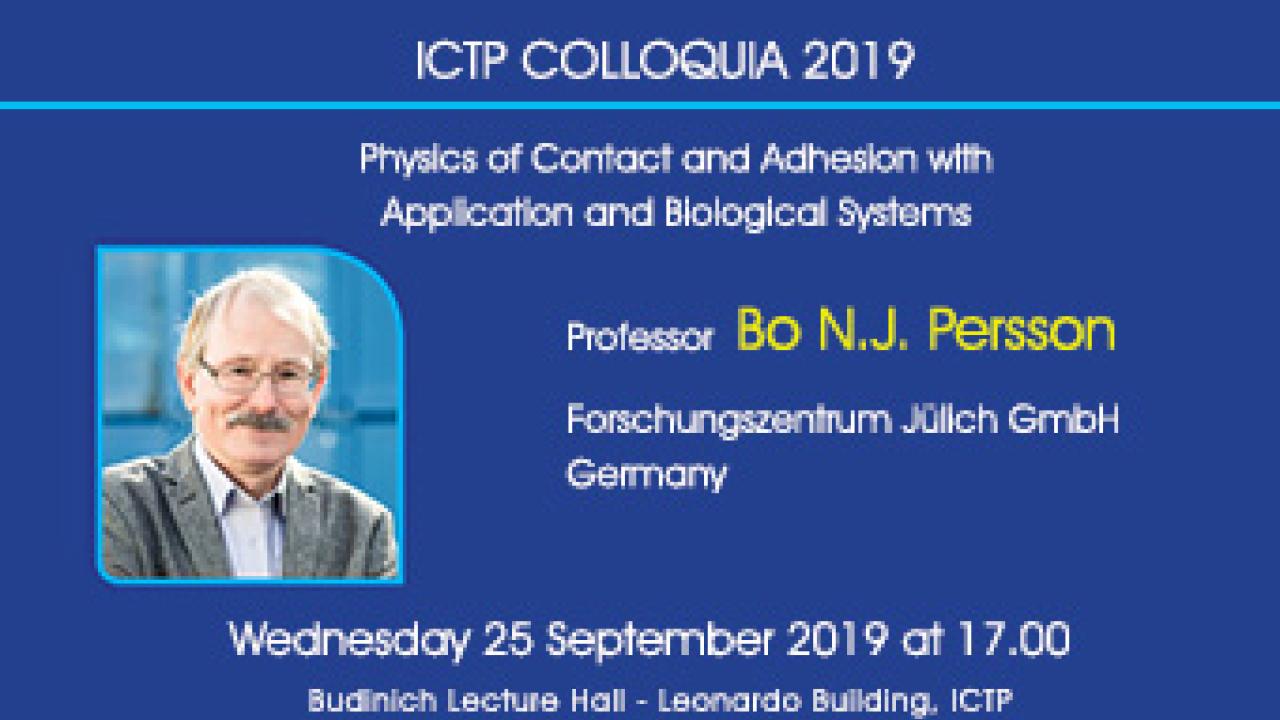
ICTP is pleased to welcome Professor Bo Persson for an ICTP Colloquium this Wednesday, 25 September 2019, at 17:00 in the Budinich Lecture Hall in the Leonardo Building. The talk, entitled "The Physics of Contact and Adhesion with application to biological systems," will be livestreamed on ICTP's Youtube channel and Facebook page.
Prof. Persson did his PhD with Stig Lundqvist, one of the founders of the condensed matter group at ICTP. After positions as a visiting scientist in groups around the globe including in Israel, Japan, China, Italy, he is now on the scientific staff at the Peter Gruenberg Institute of the Research Center Juelich, part of Germany’s Helmholtz Association, investigating electronic responses at surfaces, atomic friction, and crack propagation among other subjects.
Besides his primary research activity at PGI, Bo Persson is the founder and CEO of MultiscaleConsulting, a company involved in consulting (theory and experiment) on topics related to contact mechanics and friction. Most clients are from the tire industry, two F1-racing teams (rubber friction and tire dynamics), and medical companies (the contact between the rubber stopper and the barrel in syringes).
Light refreshments will be served after the Colloquium. Further information is available on ICTP's calendar, and everyone is warmly invited to attend.
Abstract: One of the weakest forces in nature is the van der Waals interaction which acts between all atoms and solids. Still on a macroscopic level this force field is very strong: one can theoretically hang an object with the weight of a car using a solid bar with 1 square cm cross section attached by the van der Waals interaction to a flat surface. This is never observed in reality, and in my presentation, I will explain the origin of this "adhesion paradox". I will also show how some animals, like the gecko or tree frog, have "learned" (via natural selection) to make use of these weak force fields to adhere to rough and contaminated surfaces, where traditional adhesives would fail. I will describe the origin of adhesion hysteresis, and present some experimental results illustrating it. All solid objects have surface roughness which often is fractal-like, sometimes extending from the size of the solid object to atomic distances. I will describe a theory which can be used to study the contact between two elastic solids with surface roughness and adhesion. The theory predicts the contact area and the stress probability distribution, as well as the probability distribution of interfacial separations, and is the basis for a huge number of practical applications like rubber friction, adhesion, the heat and electric contact resistance, leakage of rubber seals, conveyor belts, tire dynamics etc. It describes how the contact between two solid objects changes as the interface is studied with increasing magnification, say from the naked-eye level to atomic resolution. The theory will be illustrated with applications to the human skin, to electroadhesion for haptic touchscreens (involving the finger-glass screen contact), and adhesive pads for robotics.













